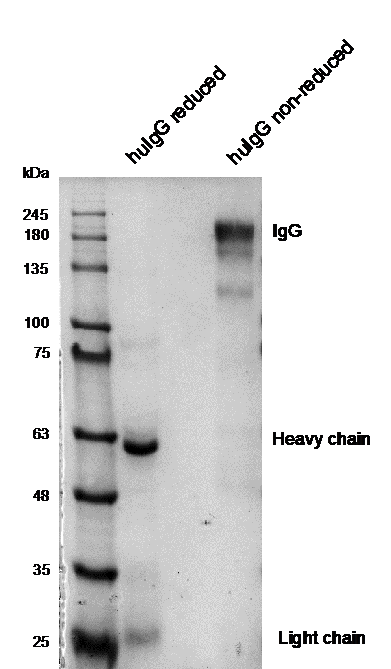
Cat. #153963
Anti-Dlg1
Cat. #: 153963
Sub-type: Primary antibody
Unit size: 100 ug
Target: Dlg1
Class: Polyclonal
Application: IF ; WB
Reactivity: Drosophila ; Human ; Rat
Host: Rabbit
£300.00
This fee is applicable only for non-profit organisations. If you are a for-profit organisation or a researcher working on commercially-sponsored academic research, you will need to contact our licensing team for a commercial use license.
Contributor
Inventor: Lawrence Banks
Institute: International Centre For Genetic Engineering And Biotechnology (ICGEB)
Tool Details
*FOR RESEARCH USE ONLY (for other uses, please contact the licensing team)
- Name: Anti-Dlg1
- Alternate name: Discs Large MAGUK Scaffold Protein, Synapse-Associated Protein 97, Discs Large Homolog 1, Scribble Cell Polarity Complex Component 2, Presynaptic Protein SAP97, Disks Large Homolog 1, SAP97
- Research fields: Cancer;Cell biology;Cell signaling and signal transduction
- Tool sub type: Primary antibody
- Class: Polyclonal
- Conjugation: Unconjugated
- Molecular weight: 107 kDa
- Reactivity: Drosophila ; Human ; Rat
- Host: Rabbit
- Application: IF ; WB
- Description: hDlg1 is a mammalian homolog of the Drosophila discs large tumour suppressor protein which is intimately involved in the control of cell growth, maintenance of cell adhesion and cell polarity. In cells hDlg1 associates with the cortical cytoskeleton that underlies the plasma membrane at cell-cell adhesion sites. PDZ domains of hDlg1 have been shown to interact with the C-termini of several proteins including Shaker-type K+ channels, cytoskeletal protein 4.1 and the APC tumour suppressor protein. In addition hDlg1 has also been shown to interact with several viral oncoproteins including Adenovirus 9 E4ORF1 protein, HTLV-1 Tax and the high risk HPV E6 proteins.
- Immunogen: N-terminus aa 1-222 of rat Dlg
Target Details
- Target: Dlg1
- Molecular weight: 107 kDa
- Target background: hDlg1 is a mammalian homolog of the Drosophila discs large tumour suppressor protein which is intimately involved in the control of cell growth, maintenance of cell adhesion and cell polarity. In cells hDlg1 associates with the cortical cytoskeleton that underlies the plasma membrane at cell-cell adhesion sites. PDZ domains of hDlg1 have been shown to interact with the C-termini of several proteins including Shaker-type K+ channels, cytoskeletal protein 4.1 and the APC tumour suppressor protein. In addition hDlg1 has also been shown to interact with several viral oncoproteins including Adenovirus 9 E4ORF1 protein, HTLV-1 Tax and the high risk HPV E6 proteins.
Applications
- Application: IF ; WB
Handling
- Format: Liquid
- Concentration: 0.9-1.1 mg/ml
- Unit size: 100 ug
- Storage buffer: Serum
- Storage conditions: -15° C to -25° C
- Shipping conditions: Shipping at 4° C
References
- Narayan et al. 2009. Virology. 387(1):1-4. PMID: 19307009.
- The high-risk HPV E6 oncoprotein preferentially targets phosphorylated nuclear forms of hDlg.
- Massimi et al. 2003. Exp Cell Res. 290(2):265-74. PMID: 14567986.
- Redistribution of the discs large tumor suppressor protein during mitosis.
- Mantovani et al. 2001. J Cell Sci. 114(Pt 23):4285-92. PMID: 11739660.
- Proteasome-mediated regulation of the hDlg tumour suppressor protein.


